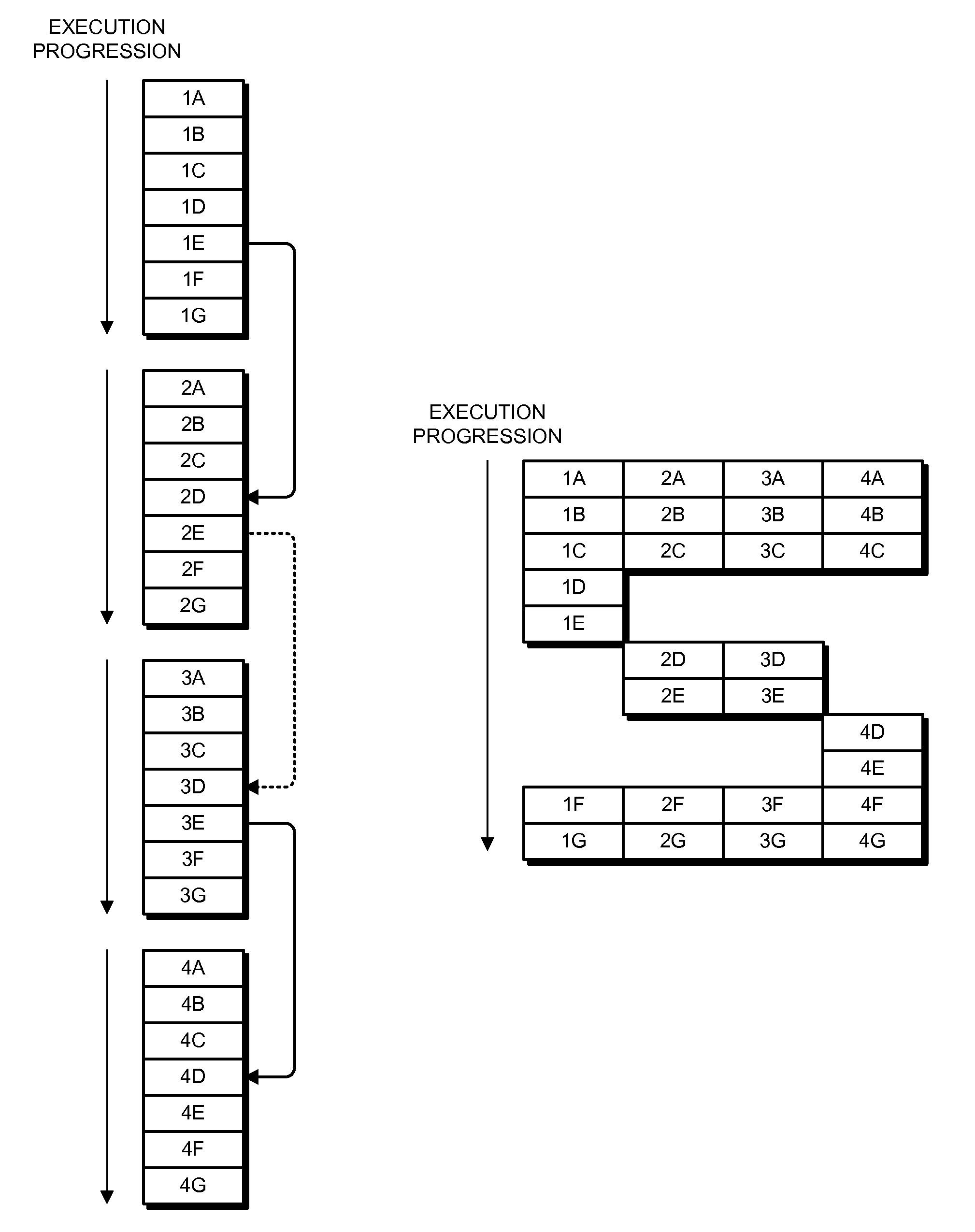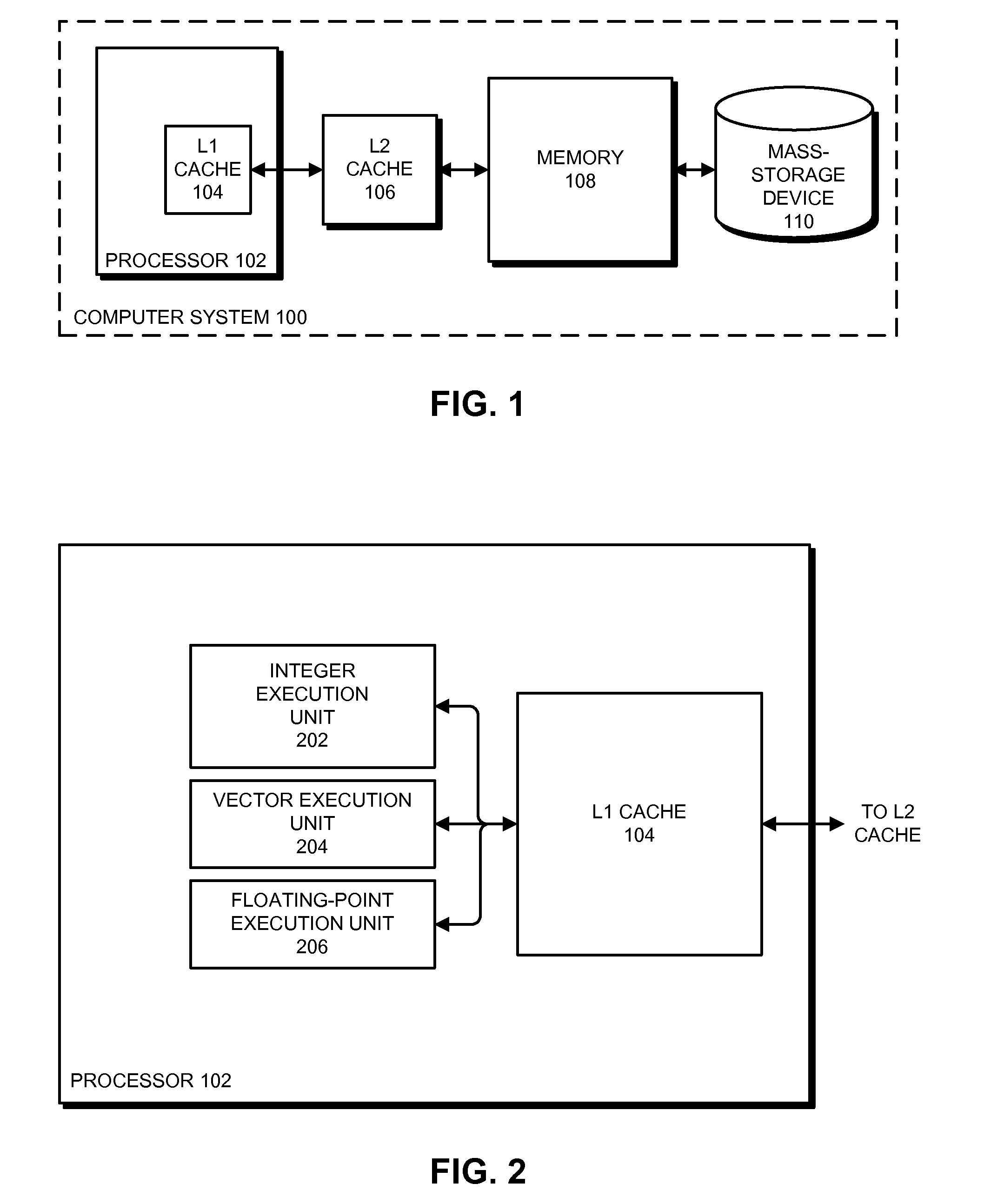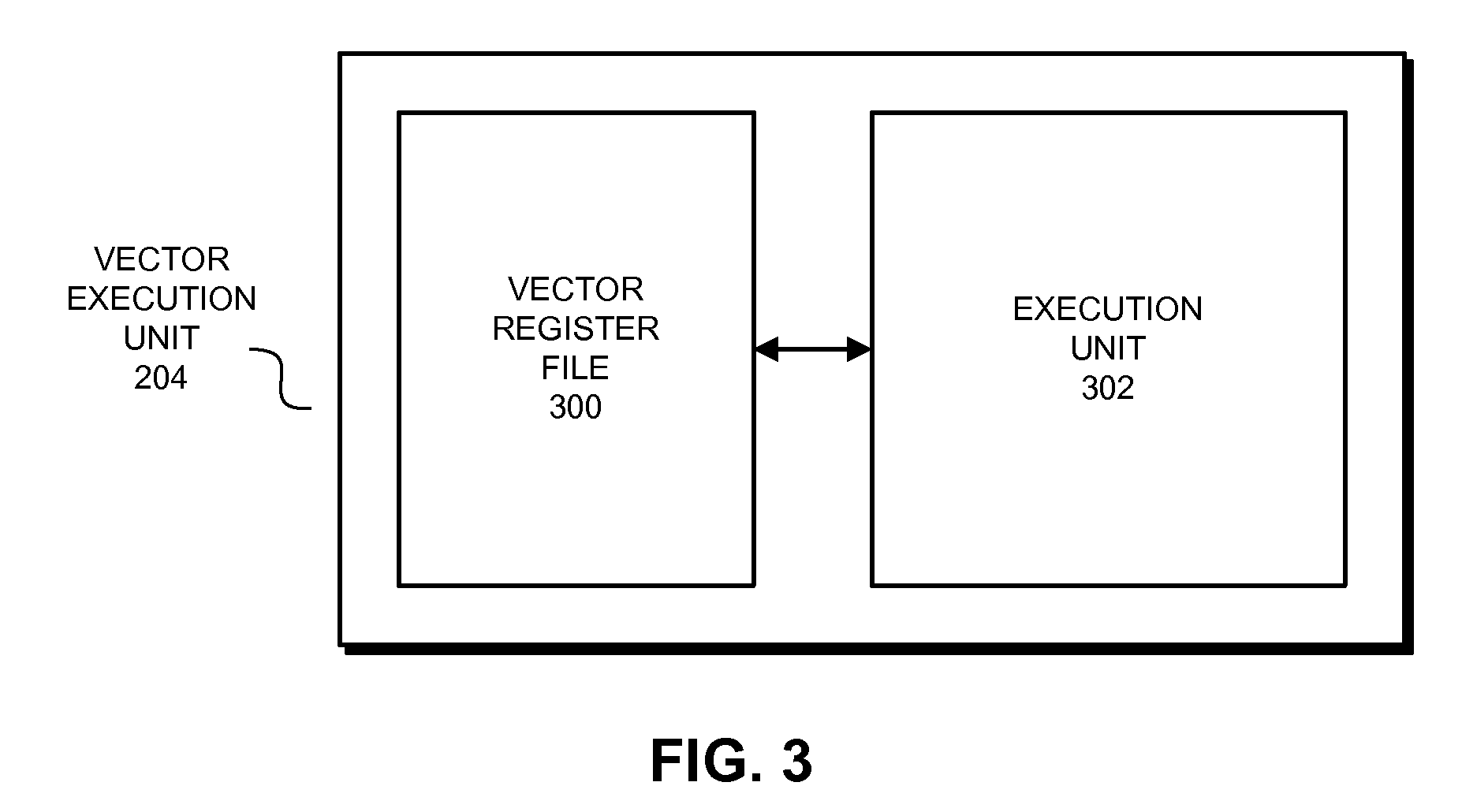Method and apparatus for executing program code
a program code and loop technology, applied in the field of computer system performance improvement, can solve the problems of large processing effort, unpopularization of tlp and dlp processors for general-purpose applications, and vectorization of loops in program cod
- Summary
- Abstract
- Description
- Claims
- Application Information
AI Technical Summary
Benefits of technology
Problems solved by technology
Method used
Image
Examples
example 1
Program Code Loop
[0084]In the described embodiments, the loop in Example 1 can be vectorized by partitioning the vector into segments for which the conditional (A[x]
[0085]We now present instructions and exemplary vectorized code in order to explain the described embodiments. The following description is generally organized so that a number of instructions are described and then one or more vectorized code samples that use the instructions are presented. In some cases, a particular type of vectorization issue is explored in a given example.
dest=Ve...
example 2b
Program Code Loop
[0118]In Example 2A, the control-flow decision is independent of the loop-carried dependency chain, while in Example 2B the control flow decision is part of the loop-carried dependency chain. In some embodiments, the loop in Example 2B leads the described embodiments to speculate that the value of j will remain unchanged and compensate later if this prediction proves incorrect. In these embodiments, the speculation on the value of j does not significantly change the vectorization of the loop.
[0119]In some embodiments, the compiler can be configured to always predict no data dependencies between the iterations of the loop. In these embodiments, in the case that runtime data dependencies exist, the group of active elements processed in parallel can be reduced to represent the group of elements that may safely be processed in parallel at that time. In these embodiments, there is little penalty for mispredicting more parallelism than actually exists because no paralleli...
PUM
 Login to View More
Login to View More Abstract
Description
Claims
Application Information
 Login to View More
Login to View More - R&D
- Intellectual Property
- Life Sciences
- Materials
- Tech Scout
- Unparalleled Data Quality
- Higher Quality Content
- 60% Fewer Hallucinations
Browse by: Latest US Patents, China's latest patents, Technical Efficacy Thesaurus, Application Domain, Technology Topic, Popular Technical Reports.
© 2025 PatSnap. All rights reserved.Legal|Privacy policy|Modern Slavery Act Transparency Statement|Sitemap|About US| Contact US: help@patsnap.com



